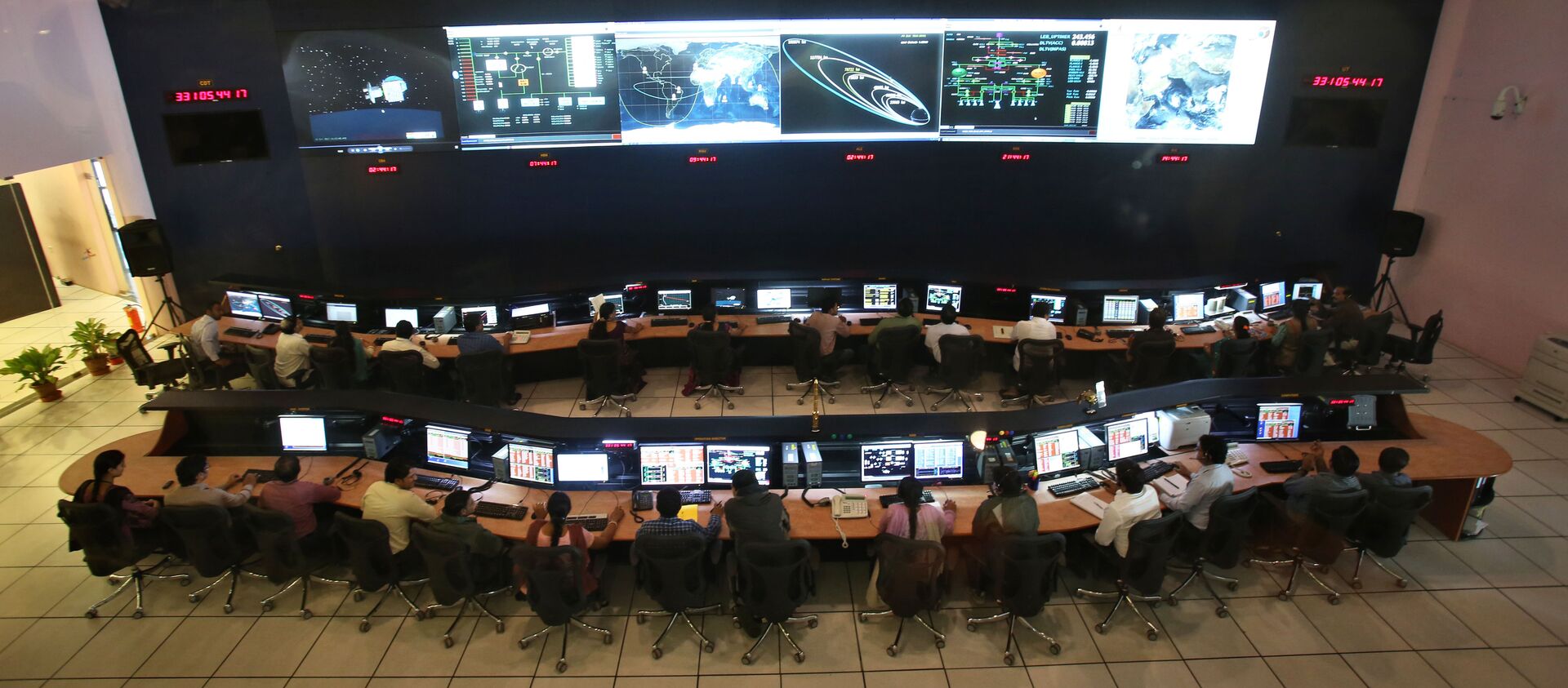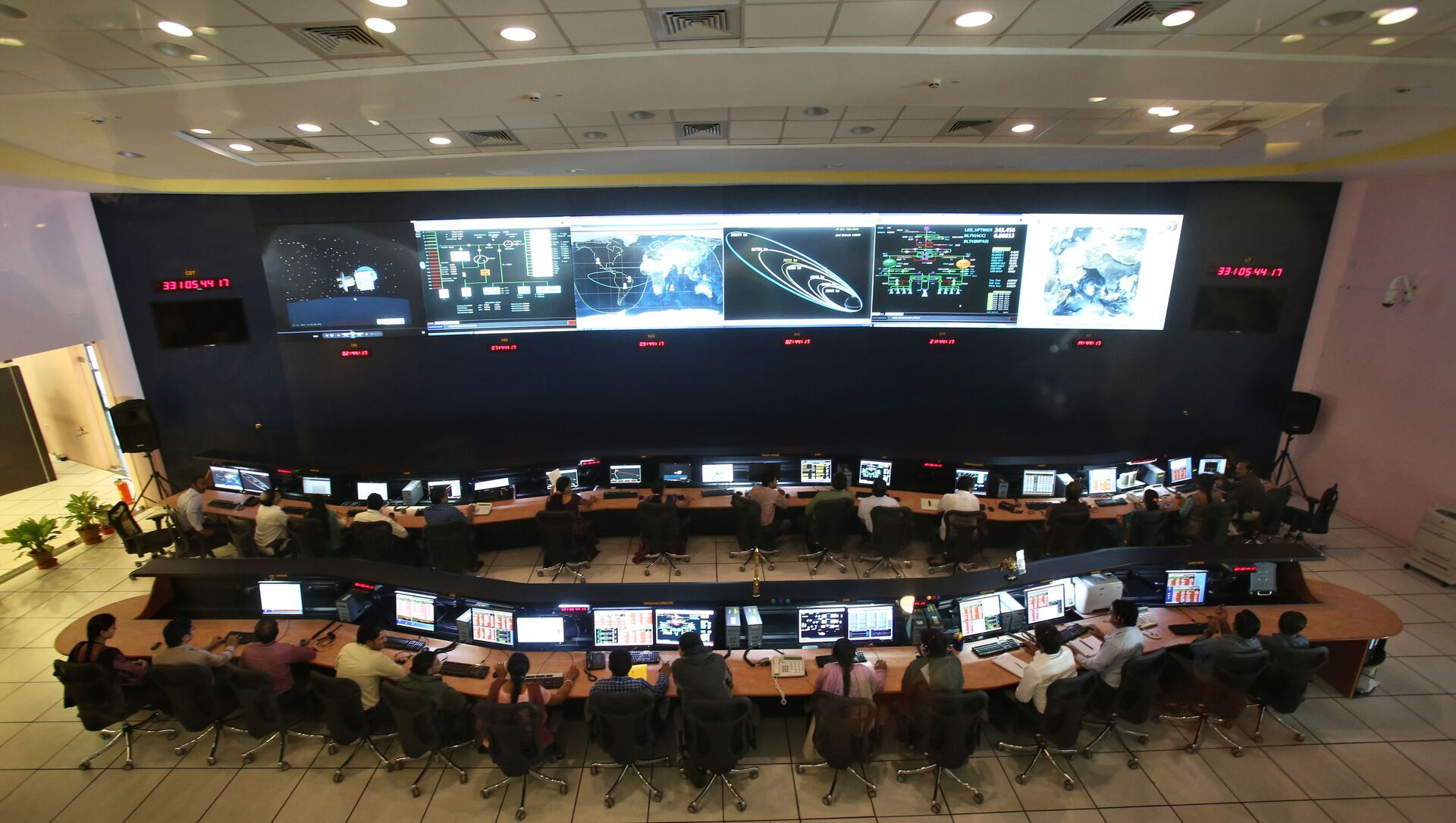https://sputnikglobe.com/20210729/india-set-to-launch-its-most-powerful-satellite-capable-of-trans-border-movement-detection-1083484733.html
India Set to Launch Its Most Powerful Satellite Capable of Trans-Border Movement Detection
India Set to Launch Its Most Powerful Satellite Capable of Trans-Border Movement Detection
Sputnik International
Due to the ongoing coronavirus pandemic, several Indian Space Research Organisation (ISRO) projects have been delayed, including key programmes like... 29.07.2021, Sputnik International
2021-07-29T12:38+0000
2021-07-29T12:38+0000
2022-10-19T20:24+0000
newsfeed
world
indian space research organization (isro)
natural disasters
satellite
https://cdn1.img.sputnikglobe.com/img/105480/66/1054806660_0:219:5262:3194_1920x0_80_0_0_93b24df33781e0e62c23d0b223135111.jpg
The Indian government on Thursday announced that the country's first state-of-the-art agile Earth observation satellite from geostationary orbit is scheduled for launch in the third quarter of 2021. The 2.26-tonne spacecraft will provide near real-time imaging of a large region of interest at frequent intervals.The spacecraft will be placed at Geosynchronous Transfer Orbit using the nation's heaviest rocket, GSLV, and subsequently, the satellite will reach geostationary orbit using its onboard propulsion system. The spacecraft will transfer high-quality images from a perch of 36,297 kilometres, adding a new edge to national security as armed forces may plan sophisticated operations along the border.The satellite will have six-band multi-spectral visible and near infra-red payload imaging sensors with 42-metre resolution; 158-band hyper-spectral visible and near infra-red payload imaging sensors with 318-metre resolution and 256-band hyper-spectral short wave infra-red sensors with 191-metre resolution.ISRO has been planning to launch this satellite to geostationary orbit since 2018, but the programme was delayed due to several technical issues that cropped up during the process.Last year, the nation's first earth observation satellite (ESO-1) was launched along with nine customer satellites.
https://sputnikglobe.com/20191127/electric-eye-on-china-pakistan-isro-successfully-launches-cartosat-3-satellite-into-space-1077413178.html
Sputnik International
feedback@sputniknews.com
+74956456601
MIA „Rossiya Segodnya“
2021
Sushmita Panda
https://cdn1.img.sputnikglobe.com/img/07e5/05/12/1082926186_0:0:2048:2048_100x100_80_0_0_4474d0d7e27a36878eb8727832be74b4.jpg
Sushmita Panda
https://cdn1.img.sputnikglobe.com/img/07e5/05/12/1082926186_0:0:2048:2048_100x100_80_0_0_4474d0d7e27a36878eb8727832be74b4.jpg
News
en_EN
Sputnik International
feedback@sputniknews.com
+74956456601
MIA „Rossiya Segodnya“
Sputnik International
feedback@sputniknews.com
+74956456601
MIA „Rossiya Segodnya“
Sushmita Panda
https://cdn1.img.sputnikglobe.com/img/07e5/05/12/1082926186_0:0:2048:2048_100x100_80_0_0_4474d0d7e27a36878eb8727832be74b4.jpg
newsfeed, indian space research organization (isro), natural disasters, satellite
newsfeed, indian space research organization (isro), natural disasters, satellite
India Set to Launch Its Most Powerful Satellite Capable of Trans-Border Movement Detection
12:38 GMT 29.07.2021 (Updated: 20:24 GMT 19.10.2022) Due to the ongoing coronavirus pandemic, several Indian Space Research Organisation (ISRO) projects have been delayed, including key programmes like Chandrayaan-3 and the ambitious manned mission Gaganyaan. However, starting next month, the agency will again take up launch activities at the Sriharikota spaceport.
The Indian government on Thursday announced that the country's first state-of-the-art agile Earth observation satellite from geostationary orbit is scheduled for launch in the third quarter of 2021. The 2.26-tonne spacecraft will provide near
real-time imaging of a large region of interest at frequent intervals.
"ISRO realised EOS-03 (GISAT-1) is capable of imaging the whole country 4-5 times daily. In addition to natural disasters, it would also enable monitoring of water bodies, crops, vegetation condition, forest cover changes, etc.", India's Minister of State for Space Jitendra Singh said on Thursday.

27 November 2019, 05:04 GMT
The spacecraft will be placed at Geosynchronous Transfer Orbit using the nation's
heaviest rocket, GSLV, and subsequently, the satellite will reach geostationary orbit using its onboard propulsion system. The spacecraft will transfer high-quality images from a perch of 36,297 kilometres, adding a new edge to national security as armed forces may plan sophisticated operations along the border.
The satellite will have six-band multi-spectral visible and near infra-red payload imaging sensors with 42-metre resolution; 158-band hyper-spectral visible and near infra-red payload imaging sensors with 318-metre resolution and 256-band hyper-spectral short wave infra-red sensors with 191-metre resolution.
ISRO has been planning to launch this satellite to geostationary orbit since 2018, but the programme was delayed due to several technical issues that cropped up during the process.
Last year, the nation's first earth observation satellite (ESO-1) was launched along with nine customer satellites.




